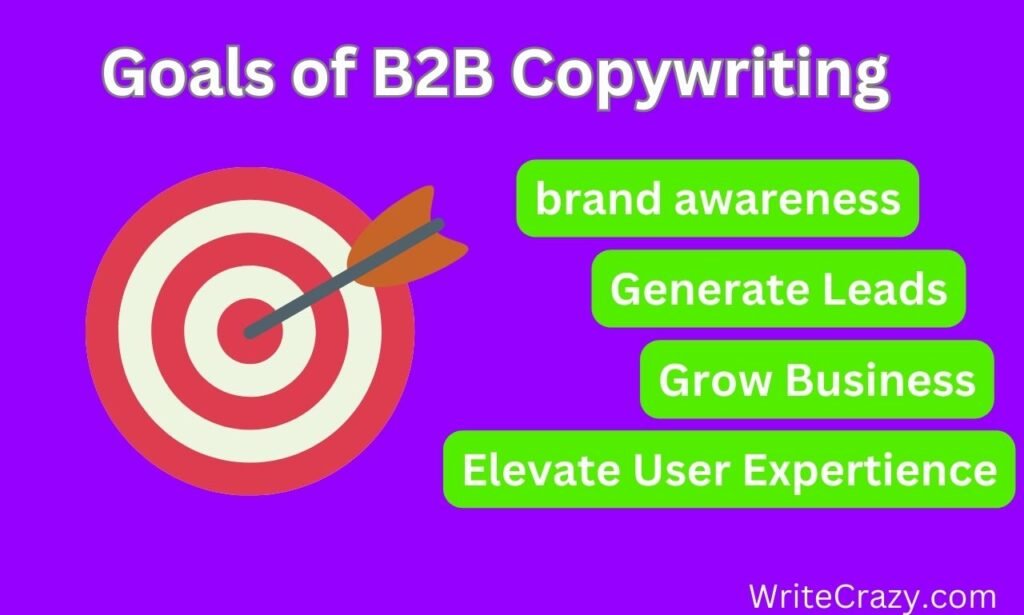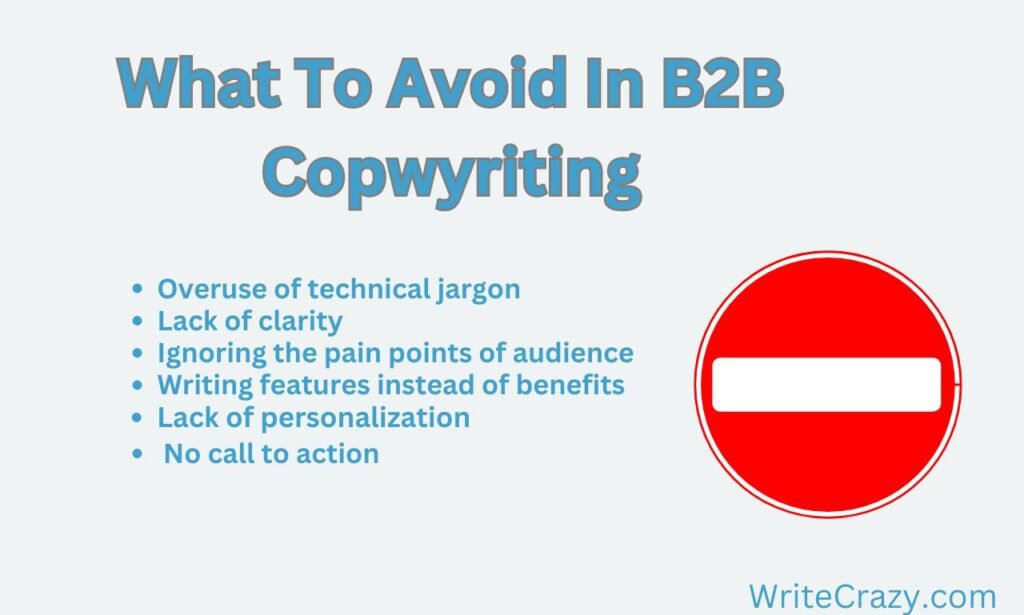Do you want to learn what is b2b copywriting? This article is for you. In the realm of business-to-business (B2B) marketing, effective communication is crucial. B2B copywriting is key here. It facilitates the exchange of information, ideas, and solutions between businesses. If you want to learn what is b2b copywriting, we have covered you all.
This guide is tailored for beginners. It helps them navigate the complex world of B2B copywriting successfully. In the dynamic landscape of B2B marketing, communication is paramount. Copywriting plays a pivotal role. It enables seamless transmission of crucial information and innovative concepts among enterprises.
Let’s delve deep and understand what is b2b copywriting and how to do effective copywriting.
What is B2B Copywriting?
B2B copywriting, essential in business-to-business (B2B) marketing, diverges distinctly from its consumer-centric counterpart, B2C. Targeting exclusively enterprises, it prioritizes precise communication to convey tailored information, innovative concepts, and practical solutions. The goal is to foster meaningful connections and drive conversions within the business sphere. Proficiency in this craft demands a nuanced understanding of industry intricacies and language nuances. Effective messaging resonates with targeted businesses, addressing their unique challenges and objectives with precision.
What Are The Goals Of B2B Copywriting?

Brand Awareness:
In B2B copywriting, enhancing brand awareness stands as a primary goal. Through strategic messaging strategies, it aims to elevate the visibility and recognition of businesses within their respective industries. Crafting compelling content that resonates with the target audience is pivotal. B2B copywriting endeavors to establish a strong and memorable brand presence. This involves effectively conveying the unique value propositions and key messages of businesses to build trust and credibility. Consistent and engaging communication efforts facilitate the establishment of long-lasting relationships and drive sustained business growth.
Get More Leads:
B2B copywriting aims to efficiently generate leads, and captivating businesses with compelling, tailored content. Through valuable insights and solutions, it entices potential clients, initiating the conversion process. This form of writing positions businesses strategically as authoritative and trustworthy sources in their industries. Engaging messaging cultivates interest and prompts action, ultimately driving increased lead generation and fostering long-term relationships.
Grow Business:
One pivotal goal of B2B copywriting is to foster business growth. By crafting persuasive and compelling content, it aims to attract potential clients and expand the customer base. Through strategic messaging tailored to the needs and challenges of businesses, B2B copywriting positions companies as valuable partners and industry leaders. It cultivates trust and credibility, encouraging businesses to engage and invest in products or services. Ultimately, effective B2B copywriting drives revenue growth and establishes long-term relationships, contributing to the overall success and expansion of the business.
Offer Exceptional Customer Experience:
Another essential objective of B2B copywriting is to provide an exceptional customer experience. By crafting compelling content tailored to the needs and preferences of businesses, it aims to enhance satisfaction and loyalty. Through clear and informative messaging, B2B copywriting educates and empowers customers, guiding them through their journey with the brand. It emphasizes personalized communication and attentive service, fostering positive relationships and long-term partnerships. Ultimately, B2B copywriting strives to exceed expectations, ensuring that every interaction leaves a lasting impression and reinforces the value proposition of the business.
Qualities Of Good B2B Copywriting:
Relevance and Customization: Craft content tailored to business needs, addressing specific pain points and challenges. Ensure each piece of writing speaks directly to the target audience, resonating with their unique requirements and objectives.
Clarity and Precision: Communicate complex ideas with clarity, avoiding unnecessary jargon. Precise language ensures understanding and engagement, making it easier for businesses to grasp the value proposition and benefits offered.
Value Proposition Emphasis: Highlight the distinct benefits and solutions provided by the product or service. Clearly articulate how it addresses the audience’s needs and improves their business operations or outcomes.
Audience Understanding: Deeply comprehend the industry, pain points, and motivations of the target audience. Tailor messaging and content to resonate with their specific challenges and aspirations, demonstrating empathy and insight.
Compelling Call-to-Action (CTA): Include clear and persuasive CTAs that prompt desired actions from the audience. Whether it’s requesting a demo, signing up for a trial, or contacting sales, CTAs guide prospects toward conversion.
Consistency and Brand Voice: Maintain a consistent tone and messaging style across all platforms. Align content with the brand’s identity and values, fostering trust and familiarity among the audience.
Data-Driven Approach: Incorporate relevant data and statistics to support claims and enhance credibility. Use compelling evidence to substantiate assertions and reinforce the value proposition offered to businesses.
Adaptability and Innovation: Stay abreast of industry trends and changes, adapting strategies to remain relevant and impactful. Continuously innovate and experiment with new approaches to engage and resonate with the audience effectively.
Steps To Do Effective B2B Copywriting?
Step 1: Understand Your Audience:
Thoroughly research the target businesses’ industry landscape, pain points, and goals. Identify specific challenges and aspirations to tailor your messaging effectively, ensuring it resonates with their needs and objectives. Use market research, customer surveys, and competitor analysis to gain insights into their preferences and behaviors, helping you create content that speaks directly to their concerns and motivators, fostering deeper connections and engagement.
Step 2: Conduct Research and Data Analysis:
Gather comprehensive data and statistics to inform your content strategy. Analyze market trends, competitor activities, and customer preferences to create compelling, data-driven copy that resonates with your audience. Utilize tools like Google Analytics, social media insights, and customer feedback surveys to uncover valuable insights and identify opportunities for optimization and improvement in your messaging and communication strategies, ensuring they are aligned with your audience’s needs and preferences.
Step 3: Clarify the Value Proposition:
Clearly articulate the unique benefits and solutions offered by your product or service. Highlight how it addresses the audience’s pain points and improves their business outcomes, using language that resonates with their needs and priorities. Emphasize the value proposition through persuasive storytelling, case studies, and testimonials, demonstrating tangible results and ROI to your audience, and compelling them to take action and engage with your brand.
Step 4: Craft Compelling Content:
Develop engaging and informative copy that educates and inspires your audience. Utilize storytelling techniques, persuasive language, and compelling visuals to capture attention and convey your message effectively, ensuring it is relevant and valuable to your audience. Tailor the content to the different stages of the buyer’s journey, providing relevant information and resources to guide prospects through the decision-making process and ultimately convert them into loyal customers.
Step 5: Implement Strong CTAs:
Incorporate clear and persuasive calls to action that prompt the desired action from your audience. Whether it’s requesting a demo, signing up for a trial, or contacting sales, make it easy for prospects to take the next step in their buyer’s journey and engage with your brand. Use actionable language and compelling incentives to motivate action, creating a sense of urgency and importance around your offers and promotions.
Step 6: Maintain Consistency:
Ensure a cohesive tone and messaging style across all communication channels. Align your copy with your brand’s identity and values, building trust and familiarity with your audience over time, and reinforcing your brand’s positioning in the market. Use style guides and brand voice documentation to maintain consistency in language, tone, and visual elements, ensuring a seamless and cohesive brand experience across all touchpoints and interactions.
Step 7: Test and Optimize:
Experiment with different copywriting techniques and strategies to gauge their effectiveness. Conduct A/B testing on headlines, CTAs, and messaging variations to identify what resonates best with your audience and optimize your content accordingly, continuously refining your approach to improve results. Monitor key performance metrics like click-through rates, conversion rates, and engagement levels to track the impact of your optimizations and make data-driven decisions to further enhance your copywriting efforts.
Step 8: Seek Feedback and Iterate:
Solicit feedback from clients, colleagues, and industry experts to refine your copywriting skills continuously. Embrace constructive criticism and iterate on your approach, leveraging insights to enhance your content and drive even more impactful results for your business. Use feedback mechanisms like customer surveys, focus groups, and peer reviews to gather valuable input and perspectives, guiding your ongoing efforts to improve and innovate in your copywriting endeavors.
What To Avoid In B2B Copywriting?
Avoid these while to write a perfect content while doing business-to-business copywriting:
- Overuse of technical jargon that may alienate the audience
- Lack of clarity or ambiguity in messaging
- Ignoring the target audience’s pain points and needs
- Not Focusing on benefits
- Generic or cookie-cutter content that lacks personalization
- compelling call-to-action
- Inconsistency in tone and messaging across different channels
- Failure to conduct thorough research on the industry and audience
- Overlooking proofreading and editing for errors and inconsistencies
- Neglecting to test and optimize copy for effectiveness and engagement

Examples Of B2B Copywriting:
- A software company crafts a compelling case study highlighting how their product helped a B2B client streamline their operations and increase revenue. The copy focuses on the client’s challenges, the solution provided, and the tangible results achieved, showcasing the product’s effectiveness in solving real-world business problems.
- An industry-leading consultancy produces a comprehensive whitepaper addressing a pressing issue in their niche market. The copy delves into research findings, expert insights, and practical solutions, positioning the consultancy as a thought leader in the field. The whitepaper educates B2B clients on the topic while subtly showcasing the consultancy’s expertise and capabilities.
Conclusion: What Is B2b Copywriting
In the expansive realm of what is B2B copywriting, this guide offers invaluable insights for beginners seeking to navigate this dynamic landscape successfully. Understanding the audience, conducting thorough research, and crafting compelling content are key steps outlined here.
Copywriters can drive engagement and foster trust within their organizations by incorporating clear calls to action and maintaining consistent messaging, aspiring. Avoiding common pitfalls while implementing best practices, B2B copywriting emerges as a powerful tool for effective business communication and sustainable growth.
FAQs: What Is B2b Copywriting
What is B2B copywriting?
It involves crafting content tailored for businesses, focusing on communication between enterprises rather than individual consumers.
How to get started as a business-to-business copywriter?
To start, familiarize yourself with the industry, refine your writing skills, and build a portfolio showcasing your ability to address business needs effectively.
Why is business-to-business copywriting important?
Business-to-business copywriting is vital for businesses to communicate their value propositions, solutions, and expertise to other businesses, fostering trust and driving conversions.
Is B2B copywriting still in demand in 2024?
Yes, business-to-business copywriting remains in demand in 2024 as businesses continually seek effective ways to communicate their offerings and attract clients in competitive markets.
